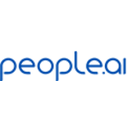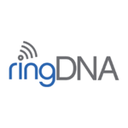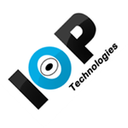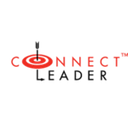Inside Sales software: purchase guide
What is Inside Sales Software?
Inside sales software is designed to help sales teams engage with prospects, track leads, and close deals more efficiently. Unlike traditional sales methods that often involve face-to-face meetings, inside sales focuses on selling remotely using communication tools such as phone calls, emails, live chat, and video conferencing. This software helps streamline the sales process, improve productivity, and enhance communication with potential clients, all while providing valuable insights to optimize strategies and performance.
Why Is It Necessary for Businesses?
In today’s fast-paced business environment, the ability to make quick and informed decisions is critical. Inside sales software helps businesses by automating repetitive tasks, tracking sales activities, and providing real-time analytics that guide decision-making. With the rise of remote work and digital communication, businesses need the right tools to keep their sales teams connected, organized, and productive. Here's why it’s indispensable:
Boost Efficiency: Inside sales software automates time-consuming tasks, enabling sales reps to focus on what truly matters: closing deals.
Improve Productivity: Track all communications and interactions with leads, so nothing falls through the cracks.
Enhance Customer Engagement: Stay connected with leads through various communication channels, delivering a seamless customer experience.
Data-Driven Decisions: Leverage analytics to track performance, understand trends, and make smarter decisions to increase sales.
Why Your Business Needs Inside Sales Software in 2025
Let’s be real: inside sales is only getting more competitive. With new technologies and evolving customer expectations, businesses can’t afford to rely on outdated tools or manual processes. Here’s how inside sales software can elevate your game in 2025:
Saves Time: Automate the tasks that used to take hours—like prospecting, follow-ups, and data entry—so your team can spend more time closing deals.
Boosts Motivation: With real-time performance insights, your team can see how close they are to their goals and celebrate wins along the way.
Improves Communication: Consolidate all customer interactions (calls, emails, chats) into one easy-to-access platform, ensuring nothing is missed and the sales process is streamlined.
Supports Growth: Scale your sales operations without needing to hire additional staff or introduce a new system every quarter.
Drives Revenue: With actionable insights and real-time data, your sales team can make more informed decisions that directly impact the bottom line.
The bottom line? Inside sales software isn’t just a tool to track deals—it’s an essential asset for driving growth, improving efficiency, and staying ahead in a fast-moving market.
Trends in Inside Sales for 2025
As we move into 2025, inside sales will look significantly different than it did just a few years ago. The trends on the horizon are all about leveraging new technology, enhancing personalization, and fine-tuning communication strategies to meet the rising expectations of customers. Inside sales teams will need to be more agile, more efficient, and more data-driven than ever before. Here are the key trends you should expect to dominate inside sales in 2025:
1. AI-Powered Sales Assistants: The Rise of Virtual Sales Reps
Inside sales teams will be harnessing the power of artificial intelligence like never before. In 2025, AI-powered sales assistants will play a pivotal role in enhancing efficiency. These tools will not only automate mundane tasks but also offer advanced insights, such as suggesting the best time to contact a lead or predicting which deals are most likely to close. Imagine having a virtual team member who can support you with data-backed recommendations—AI is truly transforming the inside sales landscape.
2. Hyper-Personalization of Sales Interactions
Gone are the days of one-size-fits-all pitches. In 2025, hyper-personalization will be key. Powered by data and machine learning, inside sales software will enable sales reps to deliver personalized experiences for each lead, based on their past interactions, preferences, and even behavioral patterns. Think personalized sales calls, tailored emails, and offers that seem almost like they were designed specifically for that individual lead—creating an engaging and memorable experience.
3. Omnichannel Engagement Across All Touchpoints
The future of sales isn’t limited to just email or phone calls. By 2025, sales teams will need to operate across multiple touchpoints, from social media platforms and live chat to text messaging and video calls. Inside sales software will integrate seamlessly across all these channels, enabling sales reps to engage leads wherever they are, whether they’re browsing your website, chatting on social media, or engaging with a blog post. A true omnichannel approach will be crucial to staying competitive.
4. Real-Time Data and Predictive Analytics for Smarter Selling
As businesses collect more data on customer behavior, inside sales teams will rely heavily on predictive analytics to make smarter decisions in real-time. In 2025, sales reps will be able to access data that tells them not just how a lead is performing, but where they are in their buyer’s journey. This means reps can adjust their pitch instantly, offering the right message at the right time to increase their chances of closing. Real-time insights into buyer behavior will help teams be more proactive and less reactive, drastically improving efficiency and success rates.
5. Advanced Sales Coaching Powered by Technology
Sales coaching is going high-tech. Inside sales software in 2025 will include built-in coaching features that analyze calls, monitor performance, and provide sales reps with real-time feedback. Whether it’s identifying the best ways to close a deal, offering constructive feedback, or tracking a rep’s progress against key metrics, advanced coaching tools will help inside sales teams improve continuously. The future of sales coaching isn’t just about training—it’s about providing reps with instant, data-driven feedback to foster improvement.
6. Seamless Integration with Customer Experience (CX)
Sales teams no longer work in isolation. In 2025, sales will be deeply integrated with customer experience (CX) teams. Inside sales software will share data with CX platforms to ensure that every touchpoint is aligned with the customer’s journey, from first contact to post-sale support. This seamless integration will help your sales team close more deals while ensuring customers receive a consistently high-quality experience at every stage of the process.
Software Tools for Inside Sales
Here are some top-rated inside sales software tools that can help your business drive more sales, improve productivity, and engage leads more effectively:
| Software |
Description |
Rating |
Free Version |
Trial |
Pricing |
| People.ai |
AI-powered insights to boost sales productivity and revenue. |
4.7 |
Yes |
Yes |
Pricing on request |
| RingDNA |
AI-driven inside sales platform that boosts sales efficiency and productivity. |
No user review |
Yes |
Yes |
Pricing on request |
| Sales Enquiry Management |
Streamline your sales enquiries with powerful lead tracking and automation. |
4.8 |
Yes |
Yes |
Pricing on request |
| Team Dialer |
Advanced call management and analytics to optimize inside sales processes. |
No user review |
Yes |
Yes |
Pricing on request |
| Moovago |
Software designed to streamline your inside sales process with lead tracking. |
No user review |
Yes |
Yes |
Paid version from €23.90/month |
| Ambition |
Sales performance management software to boost team motivation and productivity. |
4.6 |
Yes |
Yes |
Pricing on request |
How to Implement Inside Sales Software for Your Team
Implementing inside sales software into your business process can be a game-changer. Here are some actionable steps for each software to ensure a smooth adoption:
People.ai: Start by integrating it with your CRM to track all sales activities in one place. Train your team to use AI-driven insights to optimize their outreach and increase engagement.
RingDNA: Implement the platform’s automated call dialing system and integrate it with your existing communication tools. Ensure your team is comfortable with AI-powered recommendations for better conversations.
Sales Enquiry Management: Use this software to automate lead capture from various sources (e.g., website, chat, email). Train your team to track leads effectively and respond to inquiries faster.
Team Dialer: Introduce the call management system to streamline your sales process. Ensure your team is familiar with the analytics tools to identify high-value leads and prioritize follow-ups.
Moovago: Start by using Moovago to manage lead data, automate task assignments, and track performance metrics. Ensure all sales reps are on the same page regarding lead prioritization and task management.
Ambition: Implement Ambition to set clear sales goals for each rep, track their progress, and use data-driven insights for coaching. Encourage team leaders to provide regular feedback based on real-time analytics.
Conclusion: Inside Sales Software for Growth and Efficiency
As the world of sales continues to evolve, the need for more efficient and data-driven inside sales strategies becomes increasingly important. With the rise of AI, real-time analytics, and automation, inside sales software is no longer a luxury but a necessity for businesses aiming to stay competitive in 2025.
By using the right tools, your sales team can increase productivity, improve communication with leads, and, ultimately, drive more revenue. Whether it’s through AI-powered coaching, predictive analytics, or streamlined lead management, inside sales software offers the key to unlocking your team’s full potential.
The future of inside sales is here—embrace it, and watch your team’s success soar.





